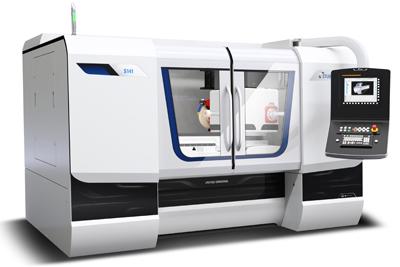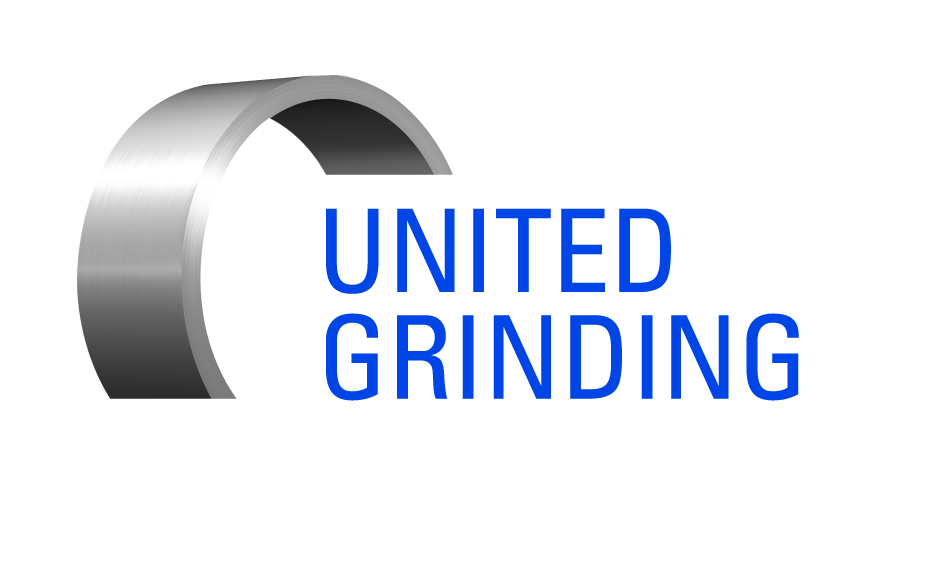
United Grinding introduced the new Studer S141 universal I.D. cylindrical grinding machine that offers the ability to internally grind longer workpieces common to the machine tool, drive element, aerospace and toolmaking industries. The S141 combines both cutting edge and proven technologies with optimal ergonomics and ease of use, while delivering dependability, quality and precision, according to the company.
The S141 features two big sliding doors for optimum accessibility and is available in three different design sizes to machine workpieces with maximum lengths of 11.81" (300mm), 27.56" (700mm) and 51.18" (1,300mm) and inside diameters up to 9.84" (250mm). These grinding capacities make the S141 ideal for processing chuck components, spindle shafts, spindle housings, rotor shafts and other such parts.
The S141's grinding spindle turret accommodates up to four grinding spindles (including a maximum of two external grinding spindles), a universal measuring probe and internal grinding quills in lengths up to 10.433" (265mm). This allows both internal and external machining of workpieces in the same clamping, minimizes noncut times and boosts part accuracy. With a direct-drive integrated swivel axis and high-resolution measuring system, the turret rotates/positions quickly and precisely for a repeatability of less than one angular second.
In addition to a workhead that can be direct or belt driven, the S141's workpiece table automatically swivels from -10 to +20 degrees via the machine control for axis parallel grinding of tapers. Up to two pivoting dressing units for fixed or rotating dressing tools mount on the machine and ensure the grinding wheels stay sharp throughout the machining operations to provide maximum performance and process stability.
The S141 features a machine bed made of patented Granitan S103 mineral casting that dampens vibration and provides excellent thermal stability for superior surface quality and workpiece accuracy. The machine also incorporates the StuderGuide system for its X and Z axes. They are coated with Granitan S200 wear-restistant guideway surfacing material for the highest precision and load bearing capacity as well as strong damping across the machine's entire speed range.
With its ergonomic and user-friendly design, the S141 changes over in the shortest times possible and is easily reprogramed. The machine's 31i B series FANUC Control with integrated PC and a 15" touch screen facilitates intuitive operation. Two different operating systems, StuderWIN and StuderSIM, are available and suitable for a variety of internal grinding applications, dressing and process-supporting measurement.
Contact Details
Related Glossary Terms
- chuck
chuck
Workholding device that affixes to a mill, lathe or drill-press spindle. It holds a tool or workpiece by one end, allowing it to be rotated. May also be fitted to the machine table to hold a workpiece. Two or more adjustable jaws actually hold the tool or part. May be actuated manually, pneumatically, hydraulically or electrically. See collet.
- cylindrical grinding
cylindrical grinding
Grinding operation in which the workpiece is rotated around a fixed axis while the grinding wheel is fed into the outside surface in controlled relation to the axis of rotation. The workpiece is usually cylindrical, but it may be tapered or curvilinear in profile. See centerless grinding; grinding.
- dressing
dressing
Removal of undesirable materials from “loaded” grinding wheels using a single- or multi-point diamond or other tool. The process also exposes unused, sharp abrasive points. See loading; truing.
- grinding
grinding
Machining operation in which material is removed from the workpiece by a powered abrasive wheel, stone, belt, paste, sheet, compound, slurry, etc. Takes various forms: surface grinding (creates flat and/or squared surfaces); cylindrical grinding (for external cylindrical and tapered shapes, fillets, undercuts, etc.); centerless grinding; chamfering; thread and form grinding; tool and cutter grinding; offhand grinding; lapping and polishing (grinding with extremely fine grits to create ultrasmooth surfaces); honing; and disc grinding.
- grinding machine
grinding machine
Powers a grinding wheel or other abrasive tool for the purpose of removing metal and finishing workpieces to close tolerances. Provides smooth, square, parallel and accurate workpiece surfaces. When ultrasmooth surfaces and finishes on the order of microns are required, lapping and honing machines (precision grinders that run abrasives with extremely fine, uniform grits) are used. In its “finishing” role, the grinder is perhaps the most widely used machine tool. Various styles are available: bench and pedestal grinders for sharpening lathe bits and drills; surface grinders for producing square, parallel, smooth and accurate parts; cylindrical and centerless grinders; center-hole grinders; form grinders; facemill and endmill grinders; gear-cutting grinders; jig grinders; abrasive belt (backstand, swing-frame, belt-roll) grinders; tool and cutter grinders for sharpening and resharpening cutting tools; carbide grinders; hand-held die grinders; and abrasive cutoff saws.
- parallel
parallel
Strip or block of precision-ground stock used to elevate a workpiece, while keeping it parallel to the worktable, to prevent cutter/table contact.

